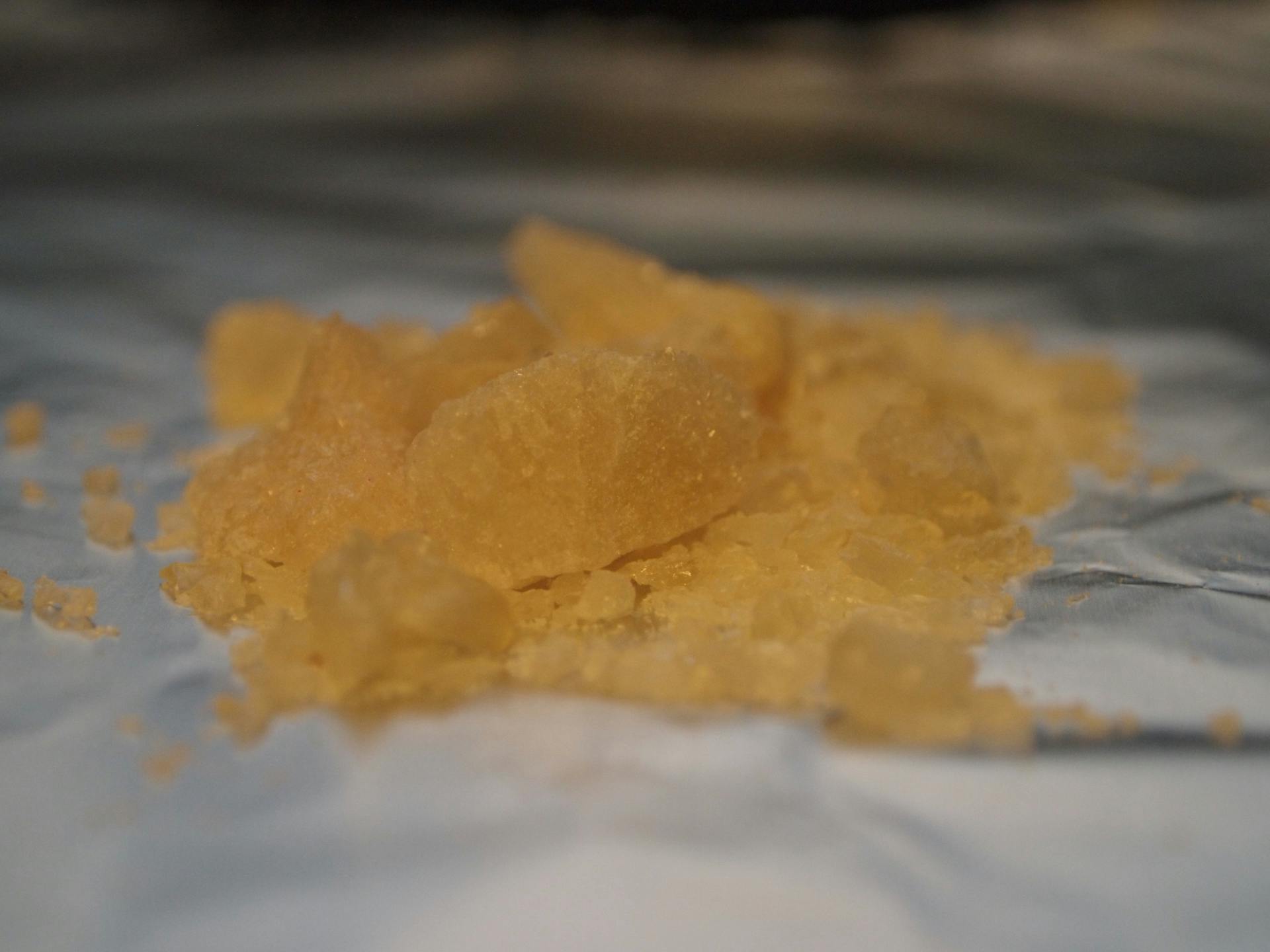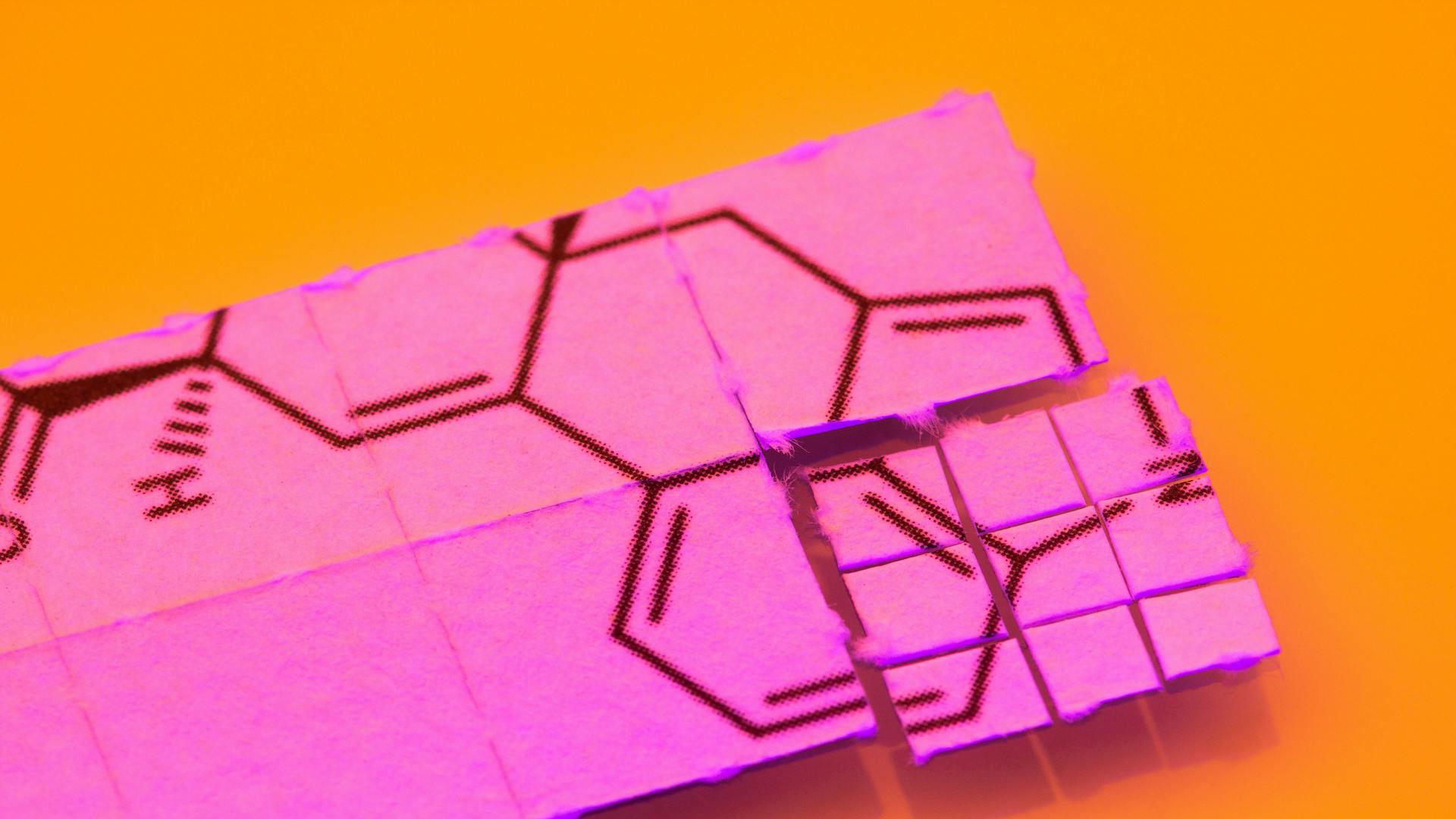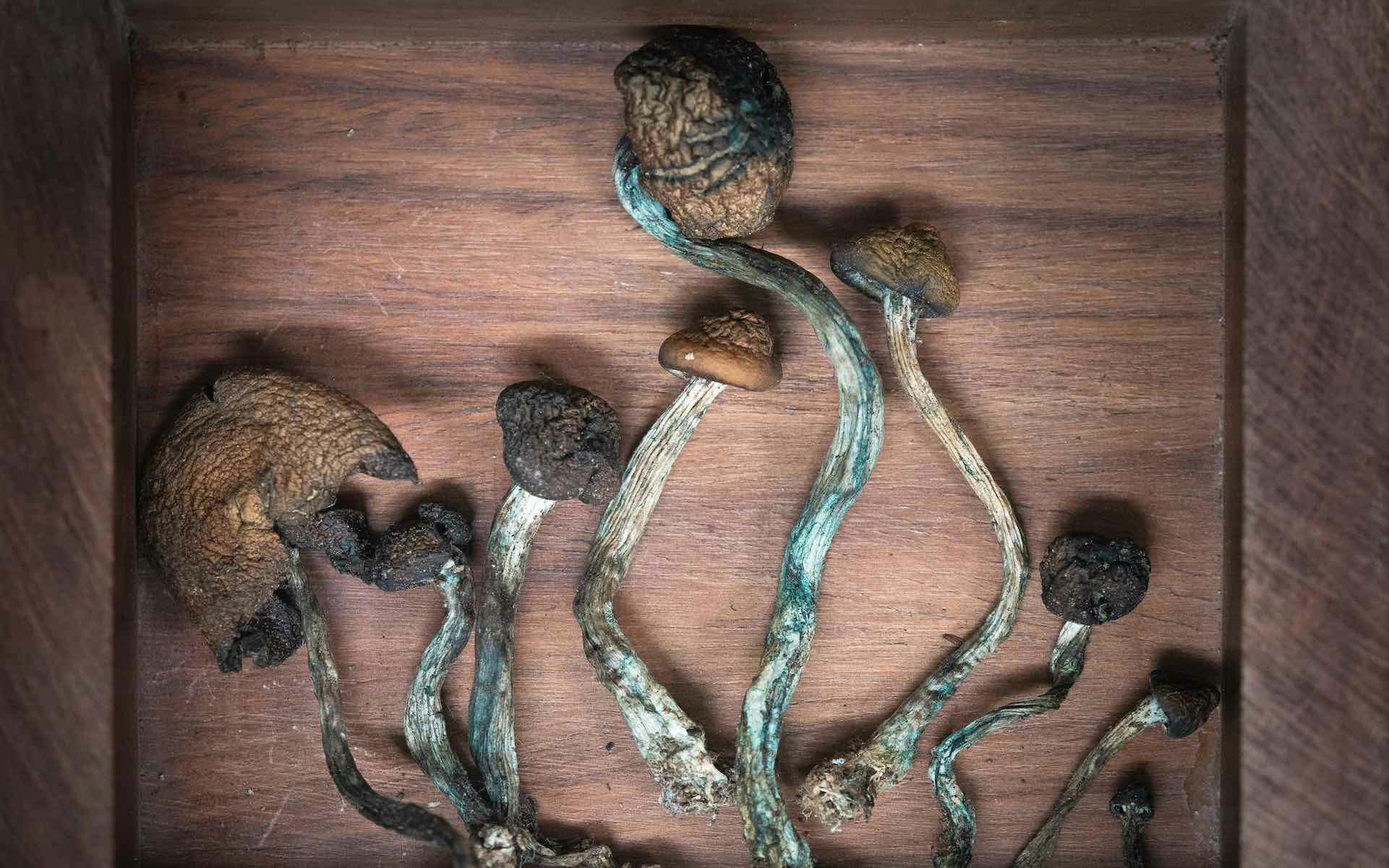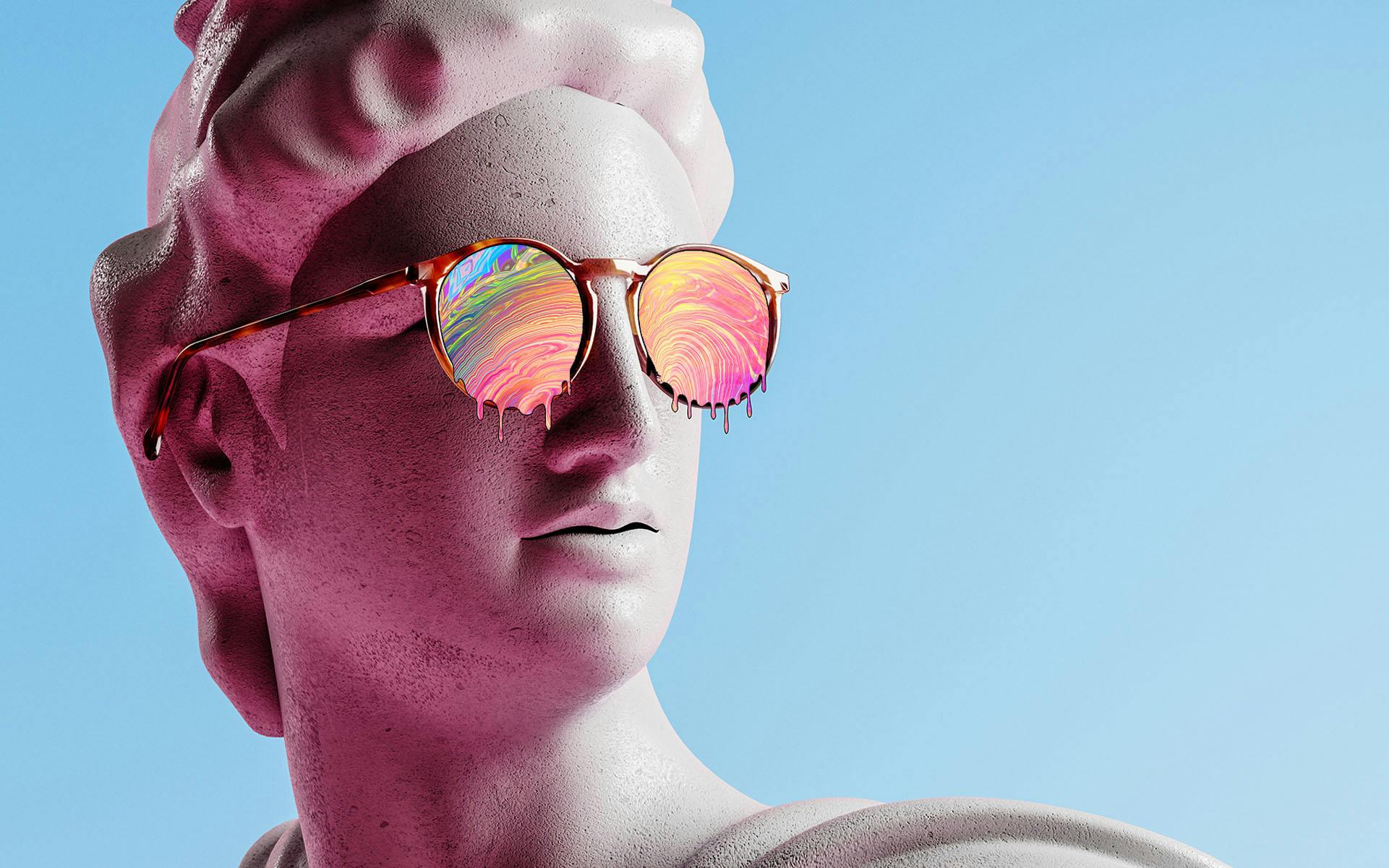Written by Emma Stone

Of all the classic psychedelics, DMT delivers a near-instantaneous trip. Mere seconds after smoking DMT, you can climb aboard a spaceship bound for far-off galaxies.
But DMT isn’t just another trippy recreational drug. When leaves containing DMT are brewed in a sacred tea known as ayahuasca, the drug becomes profound plant medicine. As growing numbers of individuals seek to be architects of their own healing, the demand for ayahuasca ceremonies is increasing across the globe.
DMT has also developed a reputation as “the spirit molecule” because it is believed to be the only psychedelic produced by the body. Some scientists even argue that the drug may be the driving force behind reports of alien abductions, encounters with angels, or near-death experiences.
But DMT may represent a powerful treatment for a number of conditions and offer an experience that prompts self-healing. Behind this psychedelic lies a fascinating story.
What is DMT?
DMT, or N, N-dimethyltryptamine, is a hallucinogenic tryptamine drug. The molecule, also affectionately known as “Dimitri,” delivers a brief and visually intense trip, earning it punchy street names such as “Fantasia,” “Businessman’s Trip,” and “45-minute Psychosis.”
Tryptamines are naturally occurring compounds found in certain plants and animals. Evidence shows that DMT is produced in mammalian brains, but research has not yet confirmed the presence of DMT in the human brain.
For Dr. Rick Strassman, author of DMT: The Spirit Molecule and clinical research consultant at Algernon Pharmaceuticals, the body’s own source of endogenous DMT may be responsible for spiritual or out-of-body experiences. Other scientists have also found that DMT models the near-death experience.
While the spirit molecule can be formulated synthetically (ironically enough), it’s most commonly ingested in a more natural format: DMT can be extracted from diverse plant species then dried to become a powder, or converted into a crystallized form so it can be smoked.
Smoking is favored because taking DMT orally does not lead to a psychedelic experience. “DMT is not orally active, as are LSD, psilocybin, mescaline—the other classical psychedelics,” said Strassman.
“For DMT to be orally active, it must be combined with a monoamine oxidase inhibitor (MAOI), such as occurs in ayahuasca, so the breakdown of DMT in the gut is inhibited long enough for psychoactive blood levels of DMT to occur. Ayahuasca is orally active DMT,” said Strassman.
Ayahuasca is a sacred tea brewed from chacruna leaves (Psychotria viridis), which contain DMT, and the vine yagé (Banisteriopsis caapi), which contains MAOIs. The MAOIs in ayahuasca allow DMT to be gradually absorbed into the brain over a period of 4-6 hours.
What is the history of DMT?
DMT has been used in shamanic ceremonies in South America for centuries. However, it didn’t arrive in the West until much later when it was first synthesized by Canadian scientist Richard Manske in 1931.
Unraveling the mysteries of the molecule was somewhat of a team effort: Microbiologist Oswaldo Gonçalves de Lima discovered that the molecule occurred naturally in certain plants in 1946; Ten years later, Stephen Szara, a Hungarian chemist and psychiatrist, extracted DMT from a Mimosa hostilis plant and administered it to himself.
Studies in the 1950s investigated the effects of DMT and other psychedelics on perception and behavior, prompting the hypothesis that schizophrenia might be linked to a psychedelic occurring within the brain, possibly DMT.
Researchers began exploring the connection between DMT levels in patients with psychosis and those without it in earnest—but no solid connection was made. Further research into DMT and other psychedelics was stifled by President Nixon’s declaration of a War on Drugs in 1971.
However, in 1972, Nobel laureate Julius Axelrod found evidence of an enzyme capable of producing DMT in human brain tissue, suggesting that the body creates its own supply of DMT. “DMT is endogenous [or, in the body], unlike LSD, psilocybin, or mescaline,” said Strassman. “The pathway for its synthesis has been identified in the rodent brain, and it’s likely a similar pathway exists in humans.”
In 2000, Dr. Rick Strassman’s book and subsequent documentary DMT: The Spirit Molecule helped to renew interest and research into DMT.
How does DMT make you feel?
DMT trippers often share reports of being ripped from their bodies, hurtling through space at the speed of light, and journeying into hidden dimensions. “One’s sense of self is usually maintained, time and space perception are generally maintained, and one can usually direct one’s will and attention toward the contents of the experience,” explained Strassman.
Although intense, DMT is rapidly metabolized by the body, so trips are very brief and last 30 minutes on average. “There’s a wide range of experiences from states of fear to euphoria, to light shows, to extraterrestrial encounters,” said Christopher Moreau, CEO of Algernon Pharmaceuticals.
Besides the mind-blowing visual and auditory hallucinations, DMT can also bring about profound introspection. Those under the influence of DMT may revisit old memories and formulate fresh perspectives on their lives.
Ayahuasca is different. “The onset of ayahuasca effects is usually 30-45 minutes, with peak effects occurring at 2-3 hours and resolved within 4-6 hours,” said Strassman. Ayahuasca is also described by consumers as a spiritual experience that is oriented toward fostering greater self-awareness, love for self and others, and healing destructive behavior patterns.

As many ayahuasca journeys occur under the watchful eye of a shaman and have a pronounced ceremonial dimension, the setting may imbue the experience with a spiritual or religious flavor.
Those who have taken part in an ayahuasca experience often describe that in the days and months following their journey, their worldview is changed in terms of personal development, interests, and relationships with others. Their inner world becomes increasingly important and there is an elevated desire to contact the spiritual realm or other dimensions.
While the mind-opening aspects of DMT and ayahuasca represent the beneficial and transformative aspects of the drug, its intensity can also produce less pleasant experiences. Consumers sometimes report restlessness, anxiety, panic attacks, paranoia, nausea, and increased blood pressure. In the case of ayahuasca, there can be intense bouts of vomiting referred to as “purges.”
Nonetheless, it’s vital to point out that a sound mindset and safe setting have been linked to the increased likelihood of a positive experience. As with all psychedelics, set, setting, and intention are incredibly important.
How does DMT work on the brain?
Like many psychedelic compounds, DMT has a strong affinity for a particular serotonin receptor in the brain: the 5-HT2A receptor. Serotonin receptors are found in very high levels in the cerebral cortex, the region of the brain responsible for physical sensation, perception, memory, association, thought, and voluntary physical action.
But DMT’s effects on serotonin receptors are only part of the story, and its effects are not fully known. While the serotonin receptor is a key pathway of action for DMT, this receptor alone cannot fully explain all its effects. Other psychedelic compounds have a stronger affinity for the 5-HT2A serotonin receptor but do not deliver the astounding visual effects that DMT does.
Experts have suggested other receptors in the brain may also play a role, such as the sigma-1 receptor, or that a presently unknown hallucinogenic receptor may be at work.
What is DMT used for today?
DMT is still categorized as a Schedule 1 drug under the Controlled Substance Act, making it illegal in the US. However, research presently underway suggests that DMT and ayahuasca may offer powerful therapy for mental health disorders such as depression, anxiety, and addiction.
Pharmaceutical companies such as Algernon are advancing study into the therapeutic applications of DMT for other conditions. “Algernon plans to be the first company globally to pursue DMT as a treatment for stroke in humans, and is planning to begin a clinical trial as soon as possible in 2021,” said Moreau. This treatment would involve a sub-hallucinogenic dose—essentially a microdose—to allow patients to sidestep the intense hallucinogenic experience to reap pure medicinal benefits.
While clinical research into DMT is taking off, so too is demand for ayahuasca retreats. Recently identified as “the drug of choice for the age of kale,” the popularity of ayahuasca looks set to grow as a new generation of spiritual seekers commune with this ancient plant medicine.
By providing us with your email address, you agree to Leafly's Terms of Service and Privacy Policy.



